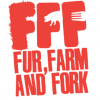You will want some sort of supply chain program where you address how you mitigate risks from food fraud an/or support any supply-chain preventive controls, which I assume you have many of given your product and the fact that you probably bring in a variety of ingredients that all pose different risks either in your product or upstream before they're made non-perishable by drying etc.
Creating a multi-ingredient sauce is generally not a simple process from a HARPC perspective, a simple process would be more like "we bring in corn, and package it in smaller containers". Anytime you're mixing ingredients things get blown up fast. E.g. if you're not cooking your chicken and it's RTE in your salad kit, I would expect a supply chain preventive control for the biological hazards posed by chicken, and how you will verify that your supplier is implementing sufficient controls to make sure it does not carry those hazards into your meal kit.
To your question about where the information needs to be however, it's up to you, FDA does not have any requirements as to the formatting of your food safety plan. HOWEVER, you may run into some auditor trouble if your supply chain preventive controls aren't in the document called your "food safety plan" and are instead referenced elsewhere in an unfamiliar format to them. This is your call but do what makes the most sense for your business, don't build the plan for the auditors sake.
Similarly, when I have sanitation preventive controls I certainly would have most of those details in my sanitation SOP's, not in my FSP. So they key is to tie them together and make sure you don't duplicate a bunch of unnecessary information, that way you don't inadvertently update one and not the other down the road. Your critical limits etc. will need to be clearly spelled out in a way that helps you explain that you meet the intent of the rules.
Edited by FurFarmandFork, 01 June 2020 - 10:59 PM.














